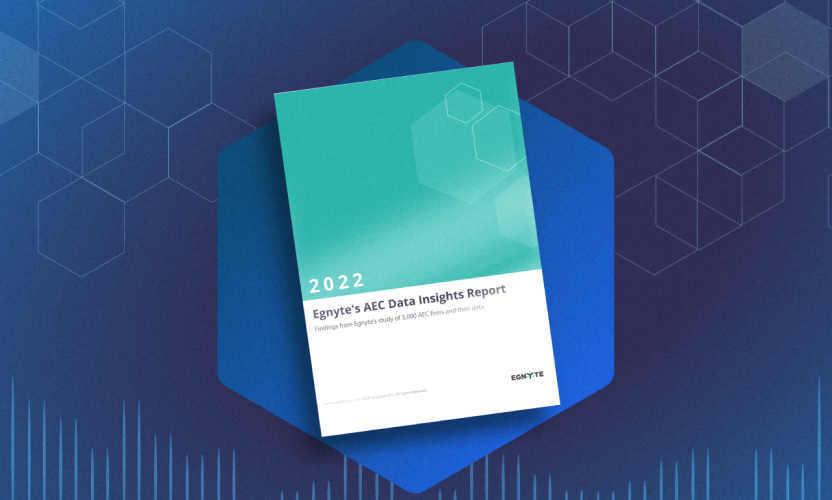
The Importance of the Golden Thread to Safely Design and Construct Buildings
Following the Grenfell Tower tragedy, the UK government commissioned Dame Judith Hackitt to conduct an independent review of building regulations and fire safety. In her report, "Building a Safer Future," Dame Judith proposed the use of a "Golden Thread" as a tool for managing buildings as holistic systems and enabling people to design, construct, and operate their buildings safely and efficiently. Since that report, the UK government has committed to implementing Dame Judith's golden thread recommendations as an essential part of their broader building safety programme. In this blog post, we explore the golden thread, how it works, and why it is essential for enhancing building safety.
What is the Golden Thread?
The golden thread involves keeping a digital record of important building information, starting from the design phase, and continuing throughout the building's life. The golden thread has three main parts: design, construction, and maintenance. By maintaining an accurate and up-to-date source for all building information, building owners and operators can better manage their buildings and optimise safety.
How Does It Work?
To guarantee that every party has access to golden thread records, project documents from different sources are to be consolidated into a single repository - preferably cloud storage that can serve as a unified source for building records. As an example, design features such as fire safety systems, sprinkler systems, escape routes, and ventilation systems need to be checked for compliance with "fire safety" classification policies. As the construction phase progresses, the golden thread is updated with additional information such as specific materials used and construction methods. And during the maintenance phase, the golden thread is utilised to ensure the building is well-maintained. Using this approach, all project information, including fire safety files, are subject to a 30-year retention policy - recommendations that are applied to past project data as well as future projects.
Why is it Essential?
The golden thread offers several advantages for ensuring building safety. It ensures that any modifications or enhancements made to the building are accurately documented, reducing the risk of errors or omissions. It enables building owners to proactively identify potential risks or hazards and take corrective action. And finally, it creates a comprehensive record of the building's safety and maintenance history that can be easily accessed in emergency situations.
However, the notion that designers and builders are now responsible for the accuracy, quality, and thoroughness of this information has caused concern. This has increased risks for organisations involved in the design or construction process, and even for projects completed in the past.
The Challenge
The golden thread safety regulation is essentially a risk-filled version of the game "pass the parcel" for firms of various types. Firms must prove that their work meets the safety and quality standards of their contract. Any ‘thread’ that ends with a firm equates to risk that firm must carry for the life of the building. Unfortunately, most organisations responsible for the building process cannot provide an auditable thread of information from installation back to the original design.
The Opportunity
The golden thread requires some time to implement. However, those who act quickly to comply will gain a major advantage over their competitors. The benefits of following the Building Safety Act (BSA) are twofold: designers and contractors can reduce their risk, while clients can enjoy improved operational value. By providing comprehensive, BSA-compliant as-builts, contractors will have an edge when bidding on projects. This shift towards compliance is similar to the push for BIM deliverables that began a decade ago, but the stakes are much higher. Furthermore, it’s crucial for your organisation's sustainability and success to view IT efforts as a vital strategic move towards pursuing work and ensuring success.
For designers, it is necessary to save revisions as a "breadcrumb trail" to preserve design decisions at all stages. This means that the design revision history is just as important as the final design, ensuring that every tweak and update is documented for future reference.
As a contractor, it is crucial to confirm that the installation in the field matches the approved design. Any discrepancies should be accurately documented and communicated to the client. This comprehensive record is commonly known as an "as-built" and is vital to ensure a thorough and complete lineage of documentation.
Implementing the Golden Thread
Implementing the golden thread approach requires four essential steps. Thankfully, the UK government has provided a comprehensive list of these components, available here. Key factors to consider include:
- Centralise and digitise all documents and data. Fragmented data stored in various formats and systems is no longer sufficient.
- Consolidate and close out the data after construction.
- Export reports into a portable and sustainable file format from project systems.
- Avoid unintended or intentional deletion and establish retention policies for the retained files. Nevertheless, make sure that the files remain reachable through a formal retention procedure. Provide access to files based on roles instead of individual users to facilitate long-term management.
- Keep a record of version history to understand how information has evolved over time, which is a crucial aspect of the Golden Thread.
Scalability is a key principle to bear in mind when implementing guidelines. Even the best-intentioned process can fail without proper execution. Thankfully, there are automated tools to help classify and retain information to meet the requirements set out by the BSA for the golden thread.
The golden thread is a holistic and systematic approach to managing building safety that encompasses all aspects of design, construction, and maintenance. By creating a digital record of critical building information, building owners and operators can ensure that they have all the necessary information to manage their buildings safely and efficiently. The golden thread approach is crucial to reducing the risk of incidents and ensuring that buildings are safe and secure for occupants and emergency services. Implementing the golden thread approach requires a systematic and proactive approach to managing building safety, but the benefits of doing so are significant.
Take the product tour to learn more about how designers and contractors use Egnyte to create a unified repository to comply with the Building Safety Act and the golden thread principle.






